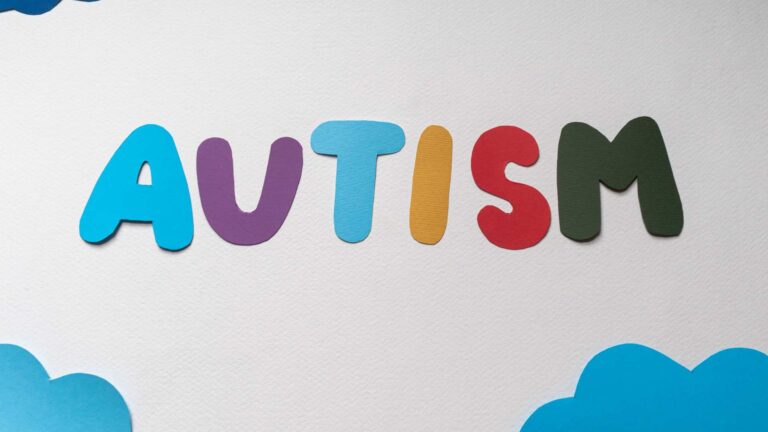Table of Contents
What is the prevalence of autism?
If it feels like conversations about autism spectrum disorder (ASD) are more common now than they were just a decade ago, it’s not your imagination. Over the past few decades, autism has transitioned from being a relatively misunderstood condition to one that is widely discussed in many environments. For many families, receiving an autism diagnosis is no longer an isolating experience but rather an entry point into a growing network of acceptance, advocacy, and support. But alongside this progress comes a striking reality—autism prevalence has been steadily rising.
But what does this increase really mean? Is it solely a reflection of improved acceptance and diagnostic tools, or is there more to the story? For parents, educators, and healthcare professionals, these numbers represent more than just data points. They carry with them a sense of urgency to better understand autism and adapt to the evolving needs of individuals on the spectrum.
Let’s find out more about this increase in this blog by ABA Centers of Florida as we explore the possible reasons behind this rise in prevalence and what it means for families and communities.
Why Is Autism Prevalence Increasing?

A study published in JAMA Network Open provides a clearer picture of this trend. It revealed that the prevalence of autism diagnoses among young adults aged 26–34 jumped from 0.7 per 1,000 in 2011 to 3.7 per 1,000 in 2022. Similar increases have been observed in children, with a narrowing gender gap as diagnoses among girls rise faster than in boys.
Moreover, the CDC found that in 2020, approximately 1 in 36 children aged 8 years were diagnosed with autism, with boys nearly four times more likely to be diagnosed than girls. Notably, for the first time, autism prevalence was higher among non-White children—such as Black, Hispanic, and Asian or Pacific Islander children—compared to White children, reversing previous trends.
The rise in autism diagnoses isn’t due to one single factor. Instead, it reflects a combination of societal, medical, and potentially biological influences. Let’s explore some of the primary reasons.
1. Better Understanding
Over the past few decades, public understanding of autism has grown exponentially. Campaigns, education programs, and advocacy efforts have made it easier for families and professionals to recognize the signs of autism earlier. Nowadays, pediatricians are also more proactive in screening, which means that children who might have gone undiagnosed years ago are now receiving the evaluations they need.
2. Screening Tools
Diagnostic tools have also become more refined, and the criteria for ASD have evolved to capture a broader range of behaviors and traits. Since Leo Kanner first identified it as a distinct condition in 1943. Initially, autism was considered a rare childhood disorder, but advancements in understanding neurodevelopment have broadened its scope. The publication of the DSM-III in 1980 marked a turning point, formally introducing autism as a distinct diagnostic category, followed by further refinements in subsequent editions. Then, the DSM-5, released in 2013, unified previously separate diagnoses like Asperger’s syndrome under the umbrella term “Autism Spectrum Disorder,” emphasizing its varied presentations and severities.
3. A Potential True Increase
While improved screening explains much of the rise, researchers have not ruled out the possibility of a genuine increase in autism prevalence. Some studies have explored potential environmental, genetic, or societal factors that could contribute, but researchers have yet to identify any definitive causes.
Multifaceted Origins of Autism
Research has shown that genetic changes, either inherited or occurring spontaneously (de novo), contribute to about 15% of autism cases. Scientists believe autism often involves multiple genes rather than a single one, a concept called polygenic inheritance. Frontiers in Psychiatry highlights this connection. Identical twins who share the same DNA have higher autism concordance rates (77% for males and 50% for females) compared to fraternal twins (31-36%), who share only about half of their genes.
However, the higher rates in fraternal twins compared to siblings of different ages suggest that shared prenatal environments—like maternal health during pregnancy—may also play a significant role.

Beyond genetics and environmental risk factors during pregnancy, recent research by Trends in Molecular Medicine recognizes it as a contributor to autism. For example, maternal viral infections, such as influenza or rubella, can interfere with fetal brain development, mainly when they occur during critical developmental stages. The mother’s immune response, influenced by her own health or autoimmune conditions, might impact the developing brain, as seen with placental abnormalities. Zinc deficiency during pregnancy is another key risk factor because zinc is essential for brain development. A study by Developmental Neurobiology shows many children with autism have low zinc levels, which can disrupt synaptic functions in the brain. Zinc deficiency can also interact with genetic factors, creating a “gene-environment interaction” that raises autism risk.
Other prenatal factors include maternal stress, diabetes, and exposure to toxins. Maternal stress, whether caused by severe life events or complications during delivery, can affect the baby’s immune system and brain development. Environmental toxins, such as pesticides or certain medications (like valproic acid and thalidomide), are known to interfere with fetal brain development, especially during early pregnancy. These findings emphasize that autism likely results from a complex interplay of genetic predisposition and environmental influences, particularly during critical prenatal stages.
How Autism Prevalence Impacts Families

For parents, the rising prevalence of autism can feel overwhelming. As more children receive diagnoses, the demand for services and resources skyrockets, leading to long waitlists for therapy and specialized educational programs. This situation poses significant challenges, especially in states like Florida, where the autism community is expanding rapidly.
However, there’s good news: the growing numbers foster a stronger sense of community. Families increasingly come together to share experiences, advocate for change, and push for improved services at both state and national levels.
Building Connections and Raising Acceptance with ABA Centers of Florida
As the autism community grows, we must continue to build connections and raise awareness in ways that feel authentic and impactful. At ABA Centers of Florida, we’ve always believed in the power of bringing people together, whether it’s through local events or more extensive partnerships. By uniting families and individuals, we help create a network of support, understanding and shared knowledge.
The rise in autism prevalence is a call to action—for better resources, earlier intervention, and greater acceptance. At ABA Centers of Florida, we’re committed to meeting this challenge head-on. Whether it’s teaching a toddler foundational skills, helping a teenager navigate social challenges, or supporting an adult in their transition to independence, we’re here for every stage of the journey.
We invite you to join us in our mission to create a more inclusive world. Whether you’re seeking therapy for your child, looking to connect with other families or want to learn more about autism, we’re here to help.
Call us at (772) 773-1975 or schedule a free consultation. Together, we can ensure that every individual with autism has the opportunity to thrive.








